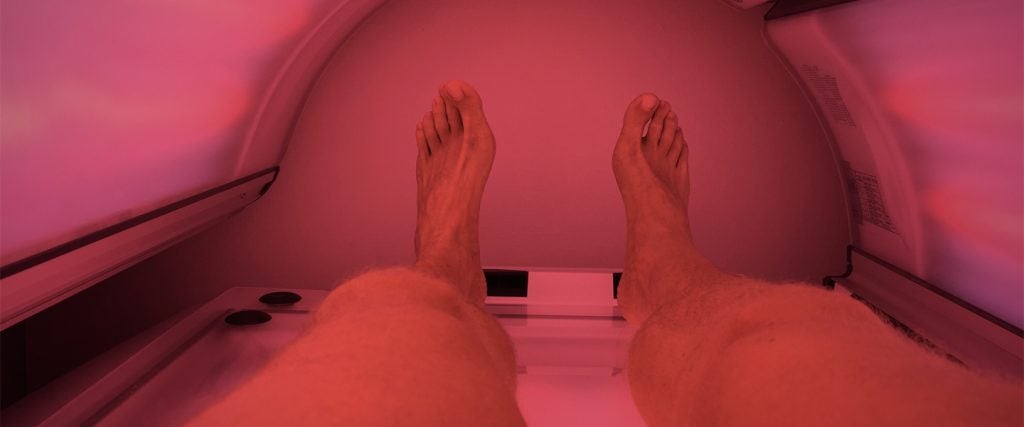Wouldn’t it be nice if red lights could solve all our problems?
That’s what red light therapy — which exposes you to low levels of red or near-infrared light — claims to do. Red light beds found at salons are believed to reduce stretch marks and wrinkles, and red light therapy is said to cure psoriasis, slow-healing wounds and even chronic pain.
But can basking under a crimson bulb like a laid-back lizard possibly be so advantageous? Eh, maybe.
While we don’t really understand how red light therapy would work, it’s believed to strengthen mitochondria, which is where energy is created in our cells. In theory, this would allow them to produce more adenosine triphosphate, an energy-carrying compound, allowing them to function more efficiently.
As for how all that extra red light might affect you, there are all sorts of studies that point to potential benefits. They say it improves hair growth, mends sun damage, reduces side effects of cancer treatments, improves joint health, enhances bone recovery, ameliorates strokes and Parkinson’s disease and treats traumatic brain injury (among other things). In November, a study even suggested that red light therapy may improve age-related macular degeneration.
This research is promising, but it’s not exactly conclusive. In fact, the Centers for Medicare and Medicaid Services determined that “the use of infrared devices is not reasonable and necessary” for the treatment of neuropathy, wounds and ulcers. Therefore, virtually no insurance companies cover any form of red light therapy.
Likewise, in a blog post about red light therapy, the National Center for Health Research says, “If it sounds too good to be true, it probably is.” This is especially accurate when it comes to other alleged benefits of treatment like improving mood, “detoxifying” the body, aiding in weight loss and curing cancer.
Online, people claim mixed results. “Red light therapy gave me hyperpigmentation spots,” one redditor writes. Another says, “Honestly, couldn’t tell the difference.” On the other hand, there are some who swear that at-home red light therapy made their skin glow in a good way.
Whether or not red light therapy works, the good news is that it’s generally considered to be safe and painless. That said, the Centers for Medicare and Medicaid Services also point to reports of burns and blistering from red light therapy units, most of which are due to broken wires, device corrosion or falling asleep during treatment. It can also damage your eyes if you don’t wear protection, which is especially worth considering if you’re looking into buying a red light therapy device for at-home use.
All in all, the unsatisfying conclusion is that we really don’t know whether red light therapy is effective. Anecdotally, some people say it’s useful, especially for problems like acne and fine lines, and the research is encouraging. However, almost all of the ailments red light therapy claims to resolve have treatments that are more scientifically backed. And needless to say, if you’re dealing with a serious issue like cancer, chronic pain or a traumatic brain injury, go see a doctor — a red light bulb isn’t going to help.
But, if your goal is to feel like a cozy lizard, there’s no harm in giving it a try.

